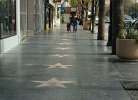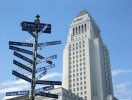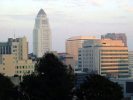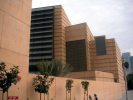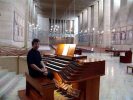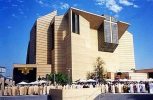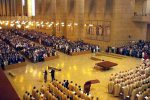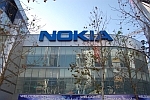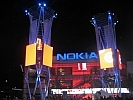| St. Vibiana Cathedral at Second and Main St. opened in 1880 with room for 1200 worshipers. Twenty years later the cathedral was deemed too small by the Los Angeles Catholic Archdiocese and needed to be replaced with a larger cathedral. In 1904 the Vatican gave it's approval for a new cathedral but it was never built. Instead it was remodeled many times over. In 1994 a magnitude 6.8 earthquake damaged the cathedral severely. The costs of repairs would have been as much as for a new structure. The archdiocese planned to demolish the church and replace it with a larger cathedral but preservationists protested and the property was sold to a developer to be converted into a performing arts center along with new residential units and an inn for travelers. Website Vibiana |
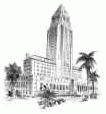 |
| LOS ANGELES ATTRACTIONS 1 |
| The Hollywood Sign is the world's largest freestanding sign measuring 450 ft. across with it's nine 45 ft. tall letters. When it was built in 1923 the sign spelled out HOLLYWOODLAND as a temporary ad for a new residential development. It was made of wood planks. Weather and time took it's toll on the landmark as the elements ate away at the wooden letters. In 1941 severe winds toppled the letter H which was then rebuilt with the damaged planks. As the letters became more unstable, the LAND was demolished in the mid 40's leaving only HOLLYWOOD. Letters were rebuilt in 1978. To view the sign take Metro Rail subway and exit at the Hollywood/Vine station. Most streets in the area provide clear views of the sign. |
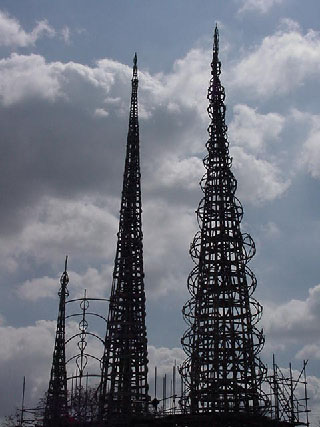 |
| Italian immigrant Simon Rodia arrived in the U.S. by way of Ellis Island N.Y., moved to Los Angeles and began constructing the Watts Towers in 1921. With literally no education as an architect or engineer, Rodia used common household tools and a window washers harness. Construction material included iron rebar, cement, colored glass from broken bottles and sea shells. By 1955 the towers were completed and Rodia gave the towers to the city. In 1958 Rodia left Los Angeles to retire in nearby Santa Barbara County, never to return to the city he loved. During the early 80's the towers were falling apart due to being exposed to the elements. The city declared the towers a safety hazzard and was slated to be demolished after several chunks of cement fell off the towers. A preservation group which opposed demolition had city engineers try and pull down the towers by rigging a skip loader with steel cables that were attached to the tallest tower. The 109 ft. tower refused to go down. The towers were spared and during the 90's went through a complete restoration. Today the Watts Towers stand as a monument to Simon Rodia's dream, ambition, and labor of love, as each year nearly a million tourists from around the world visit the Watts Towers. A short Blue Line ride away from the City Center. Get off at the 103rd Street Station. |
| It took George H. Wyman four years to complete construction on the Bradbury Building in 1893. The Bradbury is located on Broadway near Third Street in the Historic Core section of the city center. The exterior of the Bradbury looks just like any other classic art deco office building that lines Broadway. It's what's inside that makes the Bradbury different as well as special, an enclosed courtyard with marble floors, decorative wrought iron railing, and wrought iron cage elevators. For years the Bradbury has been the site of many well known movies and TV shows including movies the Indestructable Man (Lon Chaney), the Odd Couple (Jack Lemmon, Walter Matthau) and Blade Runner (Harrison Ford). TV shows include the F.B.I., the Outer Limits (early 1960's) and the Twilight Zone (late 50's to mid 60's). To visit the Bradbury Building via Metro Rail subway get off at the Pershing Square Station and exit at 4th Street. Walk a block east on 4th to Broadway, cross Broadway and turn left. The Bradbury will be a few doors up near Third Street. For a view of the interior courtyard please CLICK HERE |
| Pershing Square (est. 1866) is Los Angeles's oldest city park. Located in the heart of the bustling business district, the park is a focal point in the area. During the winter months the popular Pershing Square ice skating rink is open 7 days a week from early morning to late at night. Summer months feature day and evening concerts including on weekends. A cafe and food vendor carts are located throughout the park. Across from the Pershing Square metro rail subway station. Website Pershing Square |
| The Cathedral of Our Lady of the Angels is the first Catholic cathedral to be built in the U.S. in thirty-one years. The mammoth 11-story structure that can accomodate up to 5,000 worshipers is the largest in the nation and has quickly become a world landmark. The 63,000 square foot cathedral is designed in a post moderne style containing no right angels. The plaza area has gardens, pools, waterfalls, even a cafe and gift shop. A lower level mausoleum has space for six thousand. Although actual construction time was three years, it has taken 98 years from the time when the Vatican first gave it's approval for a new Los Angeles cathedral in 1904 to the dedication on Sept. 2, 2002. The cathedral is conveniently located across the street from the Civic Center Metro Rail subway station Temple Street exit. Website Cathedral of Our Lady of the Angels |
| MacArthur Park is Los Angeles's fabled city park named after the World War Two army general Douglas MacArthur and is the subject of the 1968 hit song "MacArthur Park" sung by Richard Harris who was staying at the Sheraton Townhouse Hotel (dark rust colored building on the distant left) and on a rainy afternoon decided to take a stroll in the park. As he watched old men playing games of chess and checkers by the lake Harris was inspired to write his song with help from songwriter James (Jimmy) webb. Actress Elizabeth Taylor wed actor Richard Burton at the same Sheraton hotel. MacArthur Park can be reached via metro rail subway from a station across the street. |
| The Four Level (1951) is a familiar Los Angeles landmark that's located near the former site of the gallows where weekly public hangings took place during the 1800's. The Four Level has been seen in countless movies and TV shows. One of the best known is Paramount Picture's 1951 classic sci-fi film War of the Worlds starring Gene Barry. Los Angeles was ready to be invaded by Martians and as the city was being evacuated a scene showed hundreds of people walking across the Four Level towards Puente Hills. The Four Level grand opening was held up for this scene and opened to traffic the day after the scene was shot. Near the Civic Center at the Harbor, Pasadena, Santa Ana, and Hollywood Fwys. |
| Angels Flight Cable Railway opened in 1901. The cost of a one way ride then was a penny. The tracks went from Hill St. to Olive St. on Bunker Hill which was a residential neighborhood full of Victorian mansions where the city's elite had their residences. The cable railway helped connect the neighborhood to the business district at the bottom of the hill. The Bunker Hill neighborhood began a decline in the late 40s. Mansions became rooming houses and the neighborhood became blighted. During the 60s many mansions were razed (some were moved) to clear the way for the biggest redevelopment project in U.S. history, the new Financial District. As all this was going on, the cablecars just kept on rolling. For a time in 1960 the railway was almost a casuality of the redevelopment but citizens groups protested and Angels Flight Cable Railway was saved. However, time ran out in 1969 and the tracks were removed. The city promised to reinstall the railway as part of the redevelopemt. Twenty seven years later that promise was kept and Angels Flight Cable Railway was rebuilt and rededicated on a new site a half a block south of the original location. Next to the Pershing Square Metro Rail subway station 4th Street exit. |
| Library Tower on West 5th just east of Flower Street and directly across the street from the Los Angeles Central Public Library is the tallest building West of the Mississippi. This landmark skyscraper which was first proposed by First Interstate Bank in 1982 began construction in 1986 and was completed in 1991. The building has 73 floors (75 if the crown is included) and rises to 1,018 ft. Back in 1989 on a cold January day as the building was under construction, iron workers on several of the top floors reported seeing snow flakes falling. Today U.S. Bank is the Library Towers biggest tennant with it's logo displayed on the skyscraper's crown. To see another Library Tower photo please CLICK HERE |
| FROM LANDMARKS AND TOURIST ATTRACTIONS TO CULTURE AND THE ARTS |
| The Los Angeles Museum Of Contemporary Art (MOCA) opened in 1986. This is the first building designed by world renouned architect Arata Isozaki to be built in the U.S. On Grand Avenue, next to the Watercourt and two blocks South of the Music Center. Open daily except Monday. To see another picture please CLICK HERE. |
| One of the more recognizable of Los Angeles landmarks is the 1928 City Hall which rises to a height of 454 ft. with 28 floors (equivalent to a modern 40 story building). The building's lower part is sheathed in California light gray granite while the upper floors and tower are covered with terra cotta tiles. In 1992 the Lindbergh Beacon, City Hall's original 1928 aircraft guidance light was restored by volunteers then reinstalled on top of City Hall's pyramid crown after being stored in a warehouse for nearly fifty years. The beacon, which was first lighted by President Calvin Coolidge with the press of a telegraph key from the White House guided aircraft to the city's airport. On January 17, 1994 Los Angeles was hit by a severe 6.8 earthquake. City Hall was badly damaged, red tagged and closed for the next seven years. Citizens then voted to have the building retrofitted and restored. It took three years for the work to be completed. Today City Hall is open for business as well as for tourists. For a great view of the city you can ride an elevator to the observation level near the top of the building or take a guided tour to learn all about this historical building. To get to City Hall via subway take a train to the Tom Bradley/Civic Center Metro Rail Station and use the First Street exit. From there it's a pleasant two block walk to City Hall down First Street. |
| The Dorothy Chandler Pavillion was the first of three theaters that form the Los Angeles Music Center. Dorothy Buffum Chandler (widow of Los Angeles Times publisher Norman Chandler) first proposed a first class performing arts center for the citizens of metropolitan Los Angeles to county supervisors in 1958. She then supervised the fund raising for construction. Enough funding was secured to break ground in 1961. The 3197 capacity Dorothy Chandler Pavillion opened on December 6, 1964 followed by the Mark Taper Forum and Ahmanson Theater in 1967. Today the Dorothy Chandler Pavillion is a familiar landmark for visitors and local residents. Two blocks west of the Civic Center metro rail subway station. |
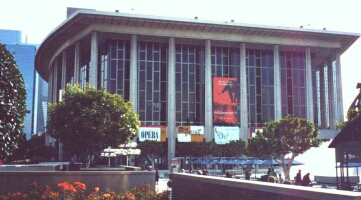 |
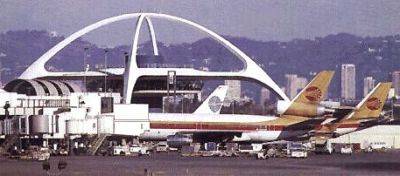 |
| Los Angeles International Airport's Paul Williams designed Airport Theme Building (1961) houses a restaurant with huge plate glass windows, giving diners spectacular views of airport operations. This world famous landmark has been seen in countless films and TV shows to establish the city location as Los Angeles. Contrary to popular belief, the restaurant never did revolve. The easiest way to get to the airport is by taking the Green Line train. Get off at the Aviation Station then take a free green line shuttle into the airport. |
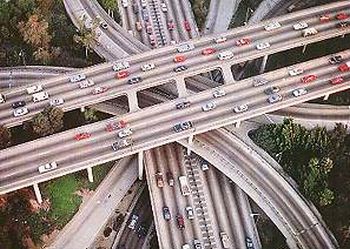 |
 |
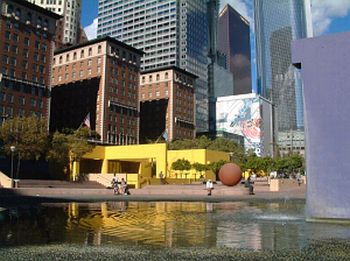 |
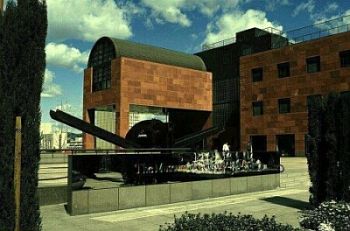 |
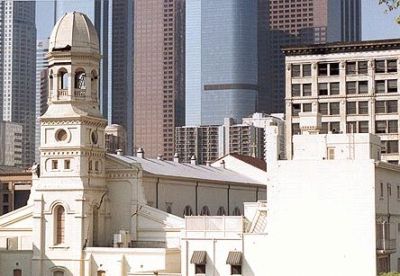 |
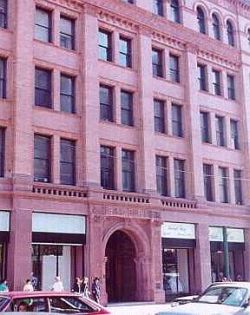 |
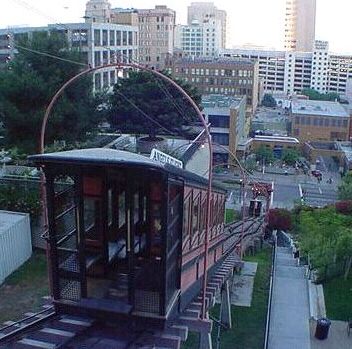 |
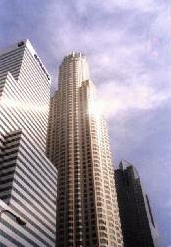 |
| The Hollywood Walk of Fame was envisioned in 1958 as a way to recognize life long contributions in entertainment's five categories: Motion Pictures, Television, Radio, Recording, and Live Stage. The first Walk of Fame star was one honoring actress Joanne Woodward that was installed in 1960. Since then over three thousand more stars have been added. The Walk of Fame is on Vine Street and Hollywood Boulevard. |
 |
 |
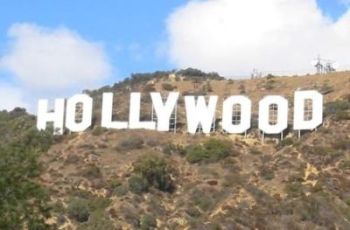 |
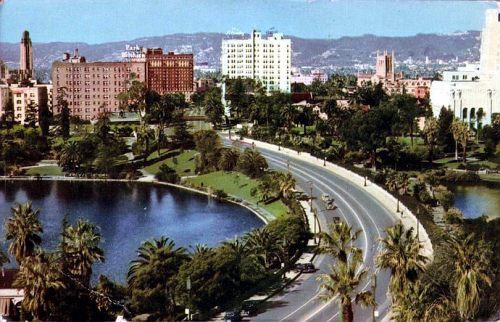 |
| The Nokia Theatre opened in 2007 and with a seating capacity of 7,100 is the world's largest. The Nokia Theatre is perfectly designed for award shows, concerts, movie premieres and is the new home to the Grammy and Emmy Awards and possibly in the near future the movie industry's Academy Awards. The Nokia Theatre is in the South Park District next to the JW Marriot and Ritz-Carlton hotels and a few blocks from a subway station and a light rail stop. |
